
by Mark Smiley | Jul 24, 2017 | General Featured
by Julie Hayden
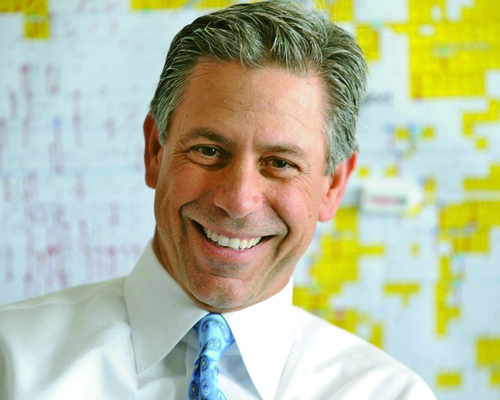
George H. Solich, President and CEO
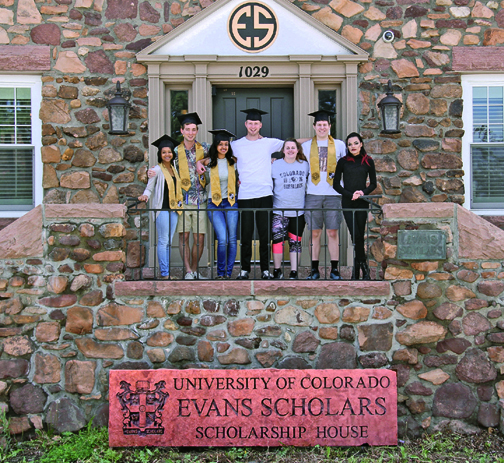
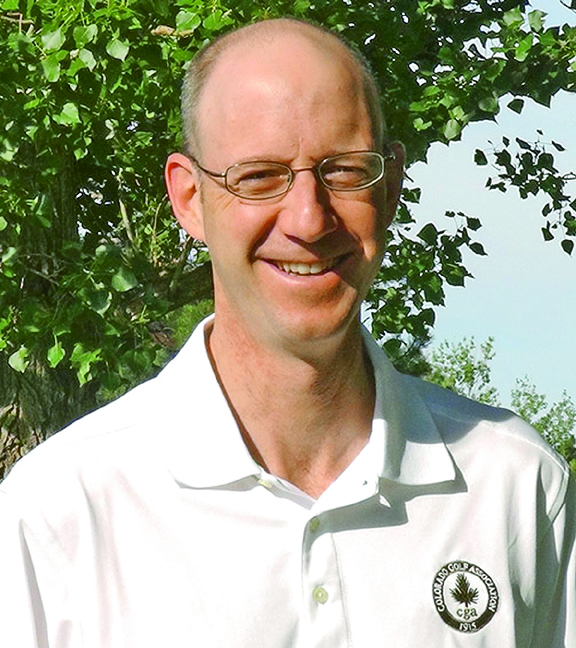




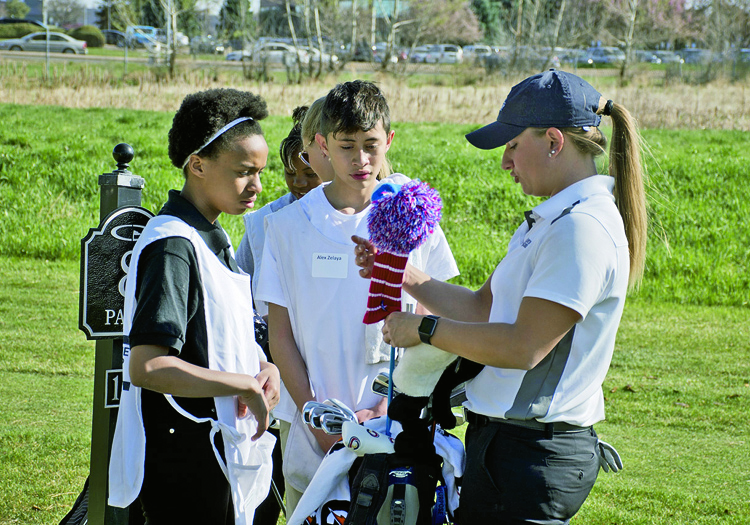 Merriam-Webster Dictionary has myriad definitions for the word “common” including that the word means “falling below ordinary standards,” “lacking refinement,” and “characterized by lack of privilege or special status.” Undoubtedly, the Colorado Golf Association intended, when it named the golf course it owns and operates, that the complex met the main definition of the word that it “relates to the community at large.”
Merriam-Webster Dictionary has myriad definitions for the word “common” including that the word means “falling below ordinary standards,” “lacking refinement,” and “characterized by lack of privilege or special status.” Undoubtedly, the Colorado Golf Association intended, when it named the golf course it owns and operates, that the complex met the main definition of the word that it “relates to the community at large.”
But what is happening at CommonGround Golf Course is in fact “extraordinary” and “phenomenal.” For $45 you can play one of the great golf courses in the Denver area designed by world class golf architect Tom Doak. The course is located off Havana Street between Alameda Avenue and East First Avenue. But that is not all. The CGA will give you your own free personal caddie for 18 holes.
You, of course, would want to tip your caddie as you would a waiter at a restaurant, but that is up to you. You already belong to the CGA if you have a Colorado golf handicap. Joining the CGA only costs $35 and it will allow you to obtain a handicap along with other privileges of membership. For non-CGA members the round costs $54.
How can such an incredible bargain possibly exist?
The Colorado Golf Association was founded in 1915 and had always wanted to have its own golf course. In 2005, in partnership with the Colorado Women’s Golf Association, it was able to acquire the old Mira Vista Golf Course from the Lowry Redevelopment Authority. The course was part of the former Lowry Air Force Base. Tom Doak agreed to design a new course for a nominal fee. Doak is one of the most admired golf architects in the world having designed such top ranked courses as Cape Kidnappers in New Zealand, Barnhougle Dunes in Australia, and Pacific Dunes in Bandon, Oregon. He also designed at CommonGround a separate nine-hole short course for junior golf and player development.
Since the CGA is a non-profit it is not trying to make money off the golf course but rather further the development of golf in Colorado. In fact kids play for free on the nine-hole golf course.
In 2012 oil and gas magnate George Solich and his wife Carol seeded the Colorado Golf Foundation with a donation of $ 2 million. In the early ’70s, George’s brother Geoff got him a job as a caddie at Cherry Hills Country Club. The brothers’ family had modest means and the caddie job resulted in George receiving an Evans Scholarship at the University of Colorado. Evans Scholarships are limited to kids who caddie for a minimum of two years, plus other requirements. Tuition-free housing at the Evans Scholars Scholarship House, which recently went through a $5 million renovation, is part of the scholarship.
The Solich Caddie & Leadership Academy provides a two-year caddie training program in which 14 and 15-year-olds develop leadership skills and enhance character through a foundation built around caddieing.
The executive director of the CGA Ed Mate was as a teenager a caddie at the Denver Country Club and an Evans Scholar at CU. “Caddieing taught me work skills, how to be responsible and how to deal with adults,” states Mate.
Chuck Bonniwell, Publisher of the Glendale Cherry Creek Chronicle, was also a caddie in his teenage years and he declared, “Caddieing was the first job I ever had and I probably learned more from it about people and human nature than virtually any other job I have ever had.”
The caddies are given a $1,200 scholarship by the Academy to be used for college provided they caddie 36 rounds, attend a leadership conference once a week, volunteer for six hours of work (which can be at a kids’ development program at CommonGround) and keep a monthly work log. The leadership sessions are based around the “Cowboy Code of Ethics.” See below.
In order to be accepted into the Solich Academy you must have completed 8th grade, show academic excellence, demonstrate financial need (family income should be around $80,000 or less) and show a positive attitude and work ethic.
After completion of the two-year program the graduates are recommended to top clubs in the Denver area including Cherry Hills Golf Club and the Denver Country Club, which are thrilled to have already trained caddies ready to go. All such caddies become eligible to be Evans Scholars at the University of Colorado.
Surprisingly there are far more teenagers who want to go to the Solich Academy and are fully qualified than there are spots available at CommonGround. Mate indicates “A lot of golfers think a caddie is only for the rich or low handicap players. Caddies make the golfing experience incredibly more enjoyable and having a caddie usually results in you having a lower score. Once a person takes out a caddie at CommonGround they seldom want to go back to a cart especially since a cart costs a significant amount of money and the caddies are free.”
“The CommonGround caddies do not care that you are not Tiger Woods,” added Mate. “They are working on a college scholarship. They want you to have an enjoyable experience and thereby earn a good tip. They are there to help you in any manner they can.”
In order to reserve a tee time at CommonGround and sign up for a free caddie, call 303-340-1520. Caddies are available from Memorial Day through Labor Day. For information about the course, visit www.commongroundgc.com and Facebook @CommonGroundGC. Follow them on Twitter @CommonGroundGC.
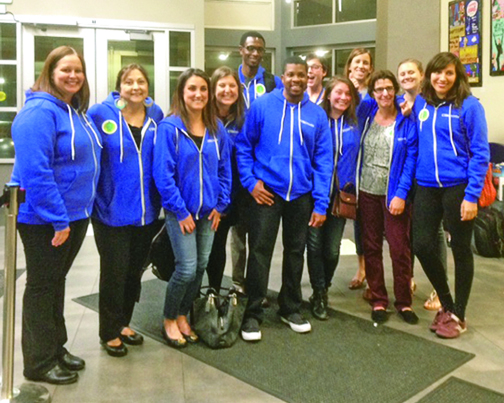
by Mark Smiley | Jun 23, 2017 | General Featured
DPS Board Votes Unanimously In Reynolds’ Favor
by Ruthy Wexler
 In an extraordinary reversal of fortune, The Denver Public Schools Board of Education at its meeting on June 19, 2017, chose existing Greenlee Elementary School Principal Sheldon Reynolds to lead the restart of Greenlee in 2018-19. He will keep his staff for this next school year and for the upcoming restart, which will be under a new name, Center for Talent Development at Greenlee (CTD).
In an extraordinary reversal of fortune, The Denver Public Schools Board of Education at its meeting on June 19, 2017, chose existing Greenlee Elementary School Principal Sheldon Reynolds to lead the restart of Greenlee in 2018-19. He will keep his staff for this next school year and for the upcoming restart, which will be under a new name, Center for Talent Development at Greenlee (CTD).
If Reynolds hadn’t been chosen to lead the restart, he would still be acting principal of Greenlee in the 2017-18 school year, but it would have been a year filled with sadness, teacher unrest, staff seeking employment at other schools — and his own disappointment at not being able to continue the work he had begun.
The Board had designated Greenlee as “persistently low-performing,” along with another elementary Denver school in December 2016 (still another elementary school, Gilpin Montessori, was closed for good due to failure of test scores to improve sufficiently. Under the recently adopted School Performance Compact (SPC) subjective factors are eliminated and a purported objective mandate based on primarily test scores control. See Greenlee Elementary On The Chopping Block, front page Glendale Cherry Creek Chronicle, March 2017.
The outcry from the parents, students, teachers and others involved with the school, which is located at 1150 Lipan Street, was immediate. In the first 18 months of Reynolds’ tenure at Greenlee morale and test scores had soared but simply just not enough under the criteria set out in the SPC. Greenlee faces a plethora of challenges including the fact that it is a school with a majority of low income students for whom English is a second language.
The competition for the restart was opened to any school providers who wanted to submit a “high quality” plan, according to DPS’s requirements.
Reynolds made a presentation along with a half dozen other applicants at the School Board meeting on May 11. After the June 19 Board vote the only real change in Greenlee Elementary will be its name,
which will now be Center for Talent and Development at Greenlee and that is just fine with the community surrounding the school which had come to embrace Reynolds and his reform efforts.
Reading teacher Lisa Friedman whooped with joy at the news. “Now we can continue the work we started. I can’t wait.”
“It’s been an interesting journey, hasn’t it?” a smiling Anne Rowe, President of the Denver School Board, said to Reynolds at a June 12 Board meeting, a week before the Board’s final vote. (This June 12 meeting’s purpose was for a newly instituted Community Review Board to recommend a school to lead Greenlee’s restart; they unanimously chose Reynolds’ plan and Reynolds’ leadership.)
“Yes,” Reynolds agreed — his tone not quite as lighthearted as Rowe’s.
Changing A School
“When I first stepped into Greenlee, I knew nothing about the SPC,” said Reynolds. “Honestly, if I had known, I never would have taken the job.”
In 2015 Reynolds was offered two Denver schools and chose Greenlee. He welcomed the opportunity to turn an unpromising school around. The way he’d do it was with a “talent development model,” a concept he’d studied while working on his doctorate in educational leadership. The North Carolina school he built entirely on that model in 2010 not only won awards, it changed the area’s demographics, when families moved nearby to enroll their kids.
Reynolds had just laid the groundwork for change at Greenlee — knowing it could take up to five years to completely change a school — when he had to shift gears for the restart plan.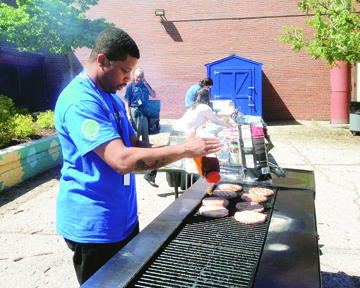
No Room For Error
The restart competition got kicked off with DPS’s Call for New Quality Schools (The Call), which invited “school developers” to submit “high quality designs” for the two schools to be restarted as well as proposals for new schools. Reynolds knew his basic design; he’d given it a new name (CTD). The hard part would be having his vision shine through while addressing every detailed requirement listed in The Call.
Comfortable with tapping the strengths of those around him, Reynolds met continually with staff, who, he said, “pushed me to define what makes our school different.”
Detecting a “woe is me, the District is out to get us” mentality, Reynolds coached his teachers toward this attitude: “We control what happens.”
“I told them, ‘People might not see you, but I know you guys are great teachers.’ See, I already had that turnaround mentality, you’ve got to be better than a teacher at another school, better than another principal … There’s no room for error when you’re turning a school around.”
Working together produced unity. At the Special Board of Education meeting on May 11, when applicants formally presented their plans, a dozen teachers surrounded Reynolds, all wearing resolute expressions and bright blue Greenlee sweatshirts.
At the beginning of that meeting, Greenlee parents pleaded to keep their principal. One young mother said tremulously, “My grandmother, who just passed away, worked at Greenlee for 26 years. She saw principals come and go. When Mr. Reynolds arrived, she knew he was the one we needed…”
Only one school emerged to challenge Reynolds for Greenlee’s restart: Wyoming-based Poder Academy. CEO Marco Martinez said he needed to take the school over because Greenlee, “despite infusions of help, has been drastically underperforming,” assuring the Board that with strict behavioral expectations, he would “turn the school and community around.”
The Work We Started
Martinez’s words — and DPS’s description of Greenlee as “persistently low-performing” — seemed to belong to a different world than the one inhabited by Greenlee teachers and parents.
When his turn arrived, Reynolds tied the two worlds together. “One thing I want to spell out clearly: if you don’t know us, it’s easy to say our students are broken, our teachers are broken, our community is broken. But once you work in our community, you see how strong it is …”
Asked by the Board what his new plan would change, Reynolds was hard put to give a specific answer. He’d added elements, notably a “birth to 5th” program to include very young children. But the basic concepts he ran the school on would remain.
On June 12, Reynolds spoke frankly to the Board, allowing that the restart process had pushed him to articulate “what makes our school unique. That’s where I wanted to end up … it’s just not how I wanted to get here.”
Having to draw so hard on his and staff’s resources drove him to be “an architect” for deeply held beliefs. “In the process, I bonded with my community. I put my name on it.”
And while others wish summer vacation could last longer, the staff, students and parents at Greenlee can’t wait for the new school year to begin.
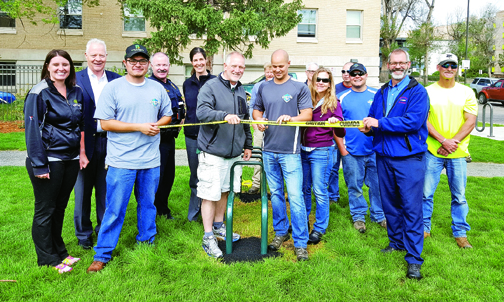
by Mark Smiley | May 26, 2017 | General Featured
Councilman Gets Glendale To Sit-up, Add Fitness Equipment
Addition Leverages Existing Appeal Of Park And Its Green Space.
by Glen Richardson

 Never mind the punishing diets, the gym dates and the doctors’ warnings; the quest to live a healthier, more active lifestyle has come to Glendale’s Infinity Park.
Never mind the punishing diets, the gym dates and the doctors’ warnings; the quest to live a healthier, more active lifestyle has come to Glendale’s Infinity Park.
New adult outdoor fitness equipment was officially unveiled in ceremonies at the park last month by the City of Glendale. Taking fitness outside of its traditional — and for some unappealing — gym setting and leveraging the existing appeal of Infinity Park and its green space adds new encouragement for residents to get outside this summer to rejuvenate, relax and refresh. Moreover, it’s what many of us want, need, desire and crave.
Glendale City Councilman Scott Brock came up with the idea of adding adult fitness equipment at Infinity Park South. It then took him several months of heavy lifting and pushing to get the City Council, Mayor Mike Dunafon and the city staff to approve the idea. Brock — who has served on the Glendale City Council since April 2016 — truly believes people should be involved, interested and aware of what’s happening in their neighborhood. He serves as the Council’s representative to the Regional Transportation District and to Four Mile Historic Park.
Pull In, Pull-Up
Once Josh Bertrand, Director of Public Works for Glendale and Infinity Park, and his staff completed installing the equipment a dedication ceremony and ribbon cutting was held the morning of May 9. T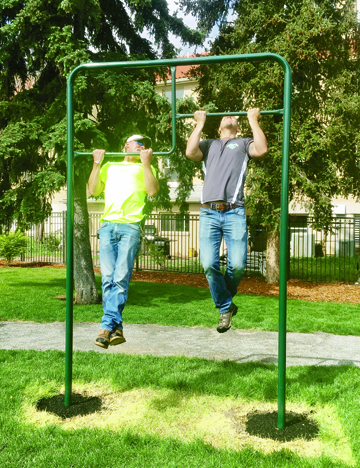 he equipment is from Miracle Recreation and includes an adult Sit-Up apparatus to improve life with sit-ups, crunches, leg lifts and other hard but fulfilling exercises.
he equipment is from Miracle Recreation and includes an adult Sit-Up apparatus to improve life with sit-ups, crunches, leg lifts and other hard but fulfilling exercises.
The newly installed Chin-Up module will help adults pull themselves to the top of the fitness ladder. Users will gain strength in their shoulders, upper back and bicep by engaging in pull-ups, chin ups and more.
Finally, there’s a Dip Station. It doesn’t matter whether you do calisthenics or weight lifting; dips have always been the single greatest chest and triceps builder. It is a complex exercise that amps up your metabolism and drives fat loss. Furthermore Dips make you look and feel amazing while delivering real performance gains.
Fulfilling Fun
The equipment is placed along the winding pathways inside the park behind the St. Andrew Abeline Seminary on Birch St. Placing the equipment in that area featuring park pavilions, picnic tables, barbecue grills, public lawn and a multi-purpose turf field encourages community and socialization. The outdoor fitness equipment is free to the user, encouraging people to work out together, and is available nearly any time of day.
Most prominently, of course,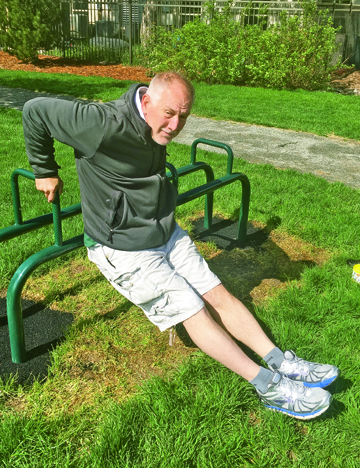 Infinity Park is the home to the Glendale Raptors, one of the nation’s premier rugby clubs. However, as Infinity Park continues to grow, it’s becoming increasingly interwoven into the cultural fabric of the Valley in innumerable ways — as an event space, as a place for family fun, plus a place that advances the health and fitness of all ages.
Infinity Park is the home to the Glendale Raptors, one of the nation’s premier rugby clubs. However, as Infinity Park continues to grow, it’s becoming increasingly interwoven into the cultural fabric of the Valley in innumerable ways — as an event space, as a place for family fun, plus a place that advances the health and fitness of all ages.
Rugby is the cornerstone for a variety of fitness-oriented outlets at Infinity Park. The Glendale Sports Center delivers the experience of a high-priced gym at a fraction of the price. Community can also take full advantage of the full-size basketball court, personal trainers, sports leagues, fitness and dance classes, and luxurious locker rooms.
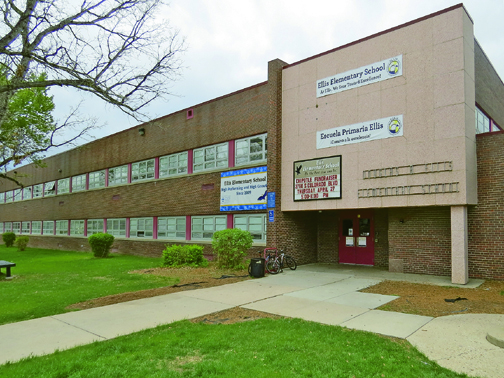
by Mark Smiley | Apr 28, 2017 | General Featured
by Ruthy Wexler
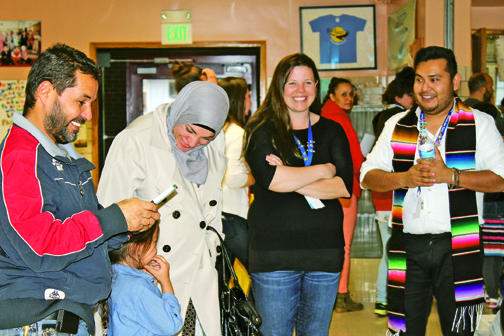 Residents of Virginia Village treasure the “back in time” feeling of their neighborhood, which was built in the 1950s. Ranch and split level-style homes, typical of that period, dot the quiet streets. There’s even a neighborhood school set back upon a wide lawn: Ellis Elementary.
Residents of Virginia Village treasure the “back in time” feeling of their neighborhood, which was built in the 1950s. Ranch and split level-style homes, typical of that period, dot the quiet streets. There’s even a neighborhood school set back upon a wide lawn: Ellis Elementary.
Ellis, however, is not typical of the 1950s.
While that decade was marked by conformity, roughly half the students at Ellis hail from countries other than the U.S.
In the 1950s, differences were kept under wraps. Not so at Ellis, where even as staff welcome newcomers to the American way of life, they encourage them to remember their own.
“We feel diversity is what made America strong. We know it is what makes Ellis stronger,” declares principal Nichole Whiteman, whose students hail from the nearby neighborhood — and from China, Mexico, Thailand, Ethiopia, Iraq, and a host of other far-flung places. “Our community is smarter, richer, more joyful and simply better because of our diversity,” Whiteman insists.
Some months ago, absorbing news of travel bans, Whiteman sat down with a few of her teachers and pondered how they could honor the school’s population. Ideas became a vision. Shortly thereafter — at 5:30 p.m. on March 22 — Ellis’s front doors opened to eager crowds. Ellis Elementary Celebrates our Diversity: A School without Borders Event had begun.
An Amazing Night
Ellis parent Mark Ginkel arrived in a kilt that bespoke his Irish ancestry. Baidan Alameri, in a fuchsia hijab, carried in a strawberry pink dessert. Other delicacies brought by parents — flan, magrud, kunata — made the cafeteria one of the evening’s most popular stops, beside the art exhibit, the Family Portraits and the resource fair, complete with immigration attorneys, healthcare workers 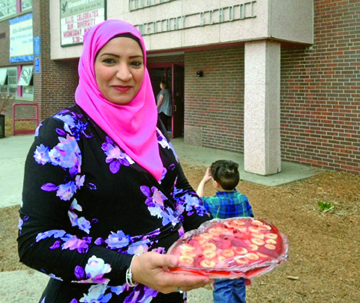 and representatives from the Denver Art Museum.
and representatives from the Denver Art Museum.
In the lobby, Ellis students introduced themselves on a video. “My name is Ibrahim; I speak English and Arabic because my family is from Morocco.” “My name is Alex, I speak Burmese because my family is from Burma.” The tag line was what each child wished others knew about their culture; e.g., “I wish you knew that in our culture, we ride elephants.” One little girl said, “I wish you knew that Mongolia is similar to America.”
In the auditorium, young authors read original compositions. A rapt audience heard 10-year-old Jadea Swindler proclaim, “I want to be a singer and a dancer … Never give up, what you want and what you dream for!”; Karla Lozano and Ruth Rosas ask, “Promise me something, never judge someone by their color or the language they speak” and two high school boys recite earnest poetry: “This is not a revolution of hate and revenge/ It’s a revolution of love, of justice. … This is my American dream.”
Giddy with goodwill, attendees beamed at each other in the halls. “It was an amazing night,” Whiteman recalls. “There was such a feeling of hopefulness and togetherness. I hope to fill the halls of our school with that feeling every single day.”
The Whole Picture
Whiteman has her work cut out for her. Besides endeavoring to create a veritable Peaceable Kingdom, she’s got to worry about test scores.
In the Denver school system (DPS), children take annual tests which compare their academic knowledge with same-age peers across the state. Schools are given a numerical rating based on the average of all their students’ scores. When educators speak of “high” or “low performing” schools, this rating is what they mean. But how can Ellis — with many students fresh from traumas like poverty and a sudden absence of the familiar, with a good chunk of them grappling with English as their new language — be rated accurately?
School ratings are posted without comment. For its low score, Ellis wins only a C- from Greatschools.org, only one star from Schooldigger.com. (A more comprehensive analysis on the DPS site ranks Ellis only as “challenged.”)
But if one looks (clicks) further, reviews voicing profound satisfaction stream into view. “My son has attended Ellis since 3rd grade. He is a GT [Gifted/Talented] student … I cannot say enough about the teachers’ abilities and drive to educate … “
“This is a school full of wonderful teachers and committed staff. It is a school for learning ….”
“This school is a GEM!! I have had opportunities to send my son to different schools but elected to keep him at Ellis due to their ability to keep him academically challenged … “
“Unfortunately,” Whiteman observes, “when a school is judged primarily on one standardized assessment and that’s what gets publicized, people are missing a huge piece of the puzzle.”
Building Character As Well As Test Scores
Which is not to say Whiteman doesn’t place importance on testing. “We work hard to increase academic outcomes … Our local data show that our students are improving.
“We soar toward excellence in academics and also in character development,” she emphasizes. “We teach values: integrity, perseverance, curiosity, optimism, respect and compassion.”
“I like how they focus on character development,” says Jim Moody, whose son is in second grade at Ellis. “It permeates every part of the school.”
Former Ellis parent Steve Garcia attests, “My son learned leadership as well as academics.”
Another parent states, “At Ellis, I know [my child’s] emotional well being is taken into account by every adult he comes into contact with.”
A Noble Experiment
It seems almost too great a coincidence that Ellis Elementary shares the name of the famous immigrant gateway in New York. Whiteman notes, “It’s wonderful to see friendships where the color of skin or religion is clearly just not a factor.”
Some parents see how such friendships can shape their child’s future. One writes, “At Ellis, my son has the opportunity to navigate cultural and linguistic differences. The connections he makes because of this cannot be taught, they must be lived and experienced. I feel confident he will leave with a dedication to humanity that will prepare him for the challenges of our global community.”
Brooke Webb, who recently became the Director of Ellis’s Parent Teacher Organization (PTO), agrees that Ellis affords rare opportunities. “A few years ago when our daughter was Kindergarten age, we turned to Ellis because we like supporting our neighborhood school. Then Olivia began and I got really impressed: academic excellence and this amazing celebration of diversity!”
Webb would like more of her neighbors to see Ellis’s 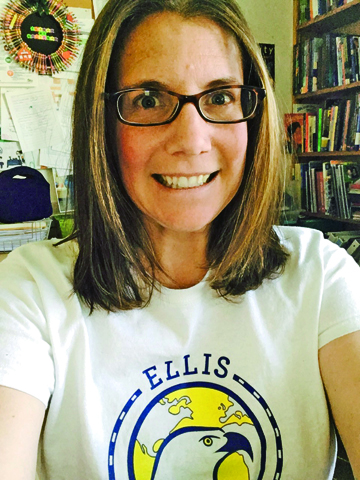 value. For though the school is located in Virginia Village, families don’t have to send their kids there.
value. For though the school is located in Virginia Village, families don’t have to send their kids there.
Choosing Ellis
“Within DPS, parents have this thing called choice,” Webb explains. “They can choose any school within the system. Many parents choose schools that have more white faces.”
There are common misconceptions, Webb says. “People say, ‘Don’t you feel funny being the minority?’ But we’re not; there’s like 20 percent of everything represented. The majority/minority paradigm doesn’t have a chance to get started! And, ‘Isn’t your child held back because all the attention goes to the kids who don’t speak English?’ But the truth is, there’s no additional time given to kids learning English. They get that in language development classes.
“Our belief in our choice is reinforced by all the terrific ben efits we see Olivia getting.”
efits we see Olivia getting.”
Right now, Ellis Elementary is supported by dedicated staff, a recently revived PTO and a population that draws equally from a stable neighborhood and a changing world. The school faces challenges. Gentrification may close affordable housing in the area. Low test scores might dissuade potential parents.
“But we love the school and we’re up to it,” Webb says. “I see strollers on the streets here, so many kids who’ll be school age soon. I want to educate them! I want to tell them just how great their neighborhood school is.”
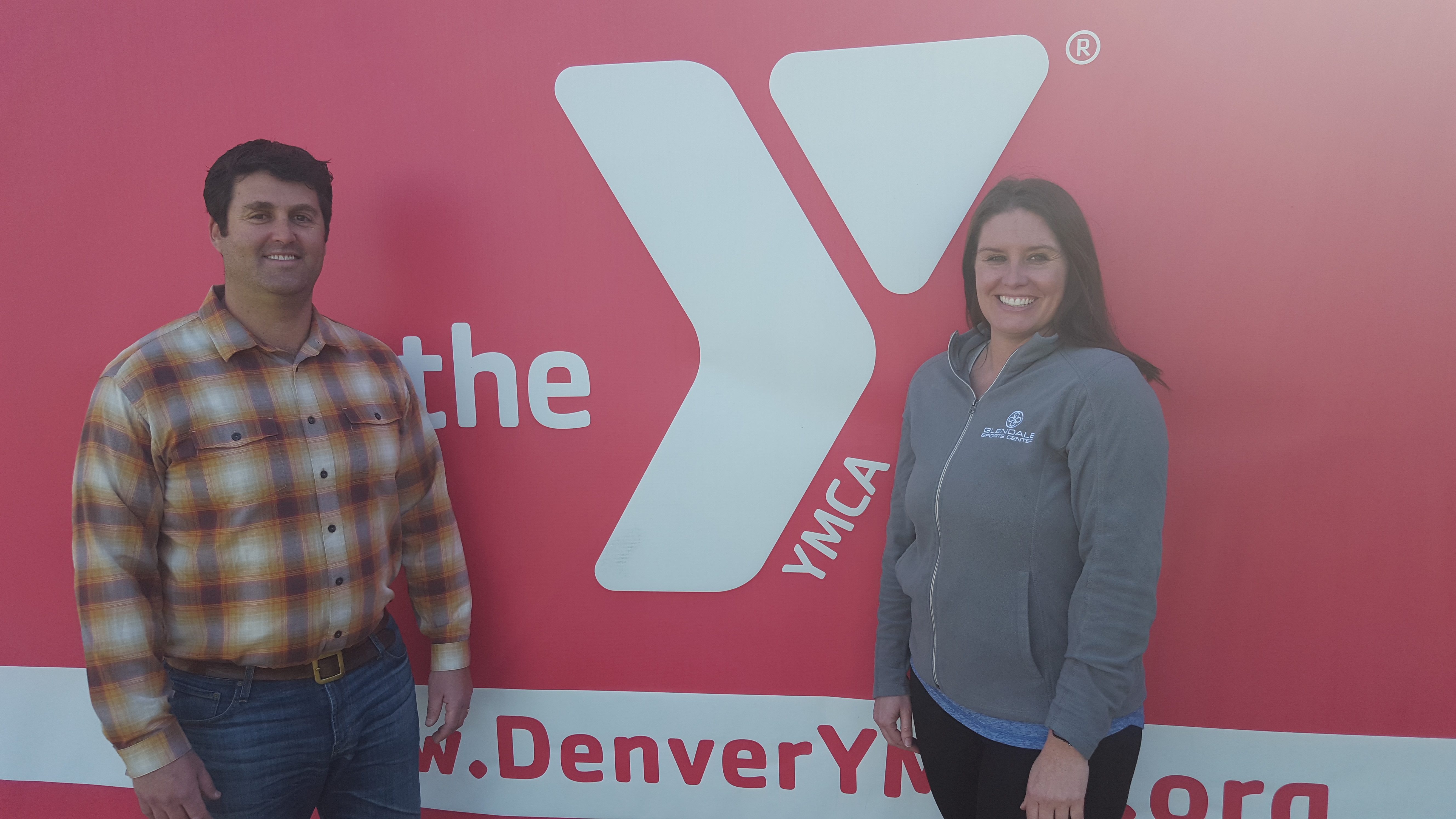
by Mark Smiley | Mar 24, 2017 | General Featured
by Mark Smiley
Every year, the Glendale Sports Center managed by the YMCA raises money to help more families and individuals access the Y’s programs and activities for youth development, healthy living, and social responsibility. The Annual Campaign can make a real difference in the lives of people throughout Glendale.
A major contributor to this campaign since arriving in Glendale a few years back is Urban Phenix. Urban Phenix is the management company representing three complexes in Glendale and three in Denver. With headquarters in Glendale, Urban Phenix understands the importance of supporting the community.
“We value our partnership with the Glendale YMCA,” said Nick Lazzara, President of Urban Phenix. “The fact that they o ffer an $8 per month membership for Glendale residents is a huge selling point for us.”
ffer an $8 per month membership for Glendale residents is a huge selling point for us.”
When the City of Glendale built the Glendale Sports Center, it retained the YMCA to manage the facility. In the past, some residents had little to no idea they lived within the boundaries of Glendale, as Glendale and Denver boundaries can be in some areas, highly irregular. When this plan was instituted many more people who thought they lived in Glendale, realized they live in Denver. The local zip code, 80246, is the same which adds to the confusion.
“We have people that come in all the time and swear that they live in Glendale to take advantage of the discount,” said Lynn Taylor, Mem bership Director. “We have seen it all when it comes to people claiming they live in Glendale.” The Sports Center also offers a $40 per month membership for those who work in Glendale. An adult Denver resident pays $50 per month.
bership Director. “We have seen it all when it comes to people claiming they live in Glendale.” The Sports Center also offers a $40 per month membership for those who work in Glendale. An adult Denver resident pays $50 per month.
Urban Phenix’s philanthropic efforts don’t begin and end with the Glendale Sports Center. They also have a Give Back program whereby any resident that lives in one of the complexes they manage and has a cause they support, Urban Phenix will help sponsor an event if the resident gets 10 people to participate. “It’s our way of encouraging philanthropic efforts amongst our residents,” said Lazzara.
Another cause Urban Phenix supports is Colorado UpLift. Colorado UpLift was founded in 1982 by Dr. Kent Hutcheson as a summer jobs program for urban, at-risk youth. Dr. Hutcheson’s passion was to help urban young people find hope in hopeless circumstances.
Colorado UpLift establishes a “pipeline of influence” model, in which UpLift staff members provide consistent instruction for students from elementary school through college age and have a better chance to emerge as successful, productive young adults. Since their inception, they have served approximately 30,000 urban youth in the Denver Metro area, and will impact more than 5,600 students in 2017. “98 percent of the seniors graduate that went through this program,” said Lazzara.
Colorado UpLift has an event scheduled May 4, 2017, from 5:30 to 9 p.m. at the Infinity Park Event Center in Glendale. The 2017 event titled Urban Masterpieces will feature an evening with food, music by Hazel Miller, and stories of lives changed by a positive influence.
The Glendale Sports Center hopes to expand its partnership with Urban Phenix as the company establishes more of a presence in the greater Glendale community. Partnerships such as these are vital to the YMCA and the programs it offers year-round.
For more information about Urban Phenix, visit www.urbanphenix.com, for more information about the Glendale Sports Center, visit www.denverymca.org/glendale, and for Colorado UpLift, visit www.coloradouplift.org.

by Mark Smiley | Mar 1, 2017 | General Featured
Over 4,000 People Attend Travel Event
by Charles C. Bonniwell
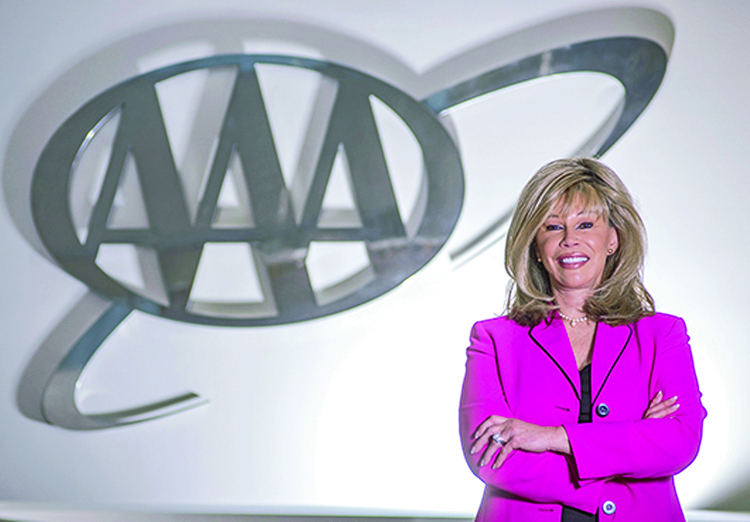
Most Coloradans associate AAA with roadside assistance services which is understandable since the company was founded in Chicago, on March 4, 1902, as the American Automotive Association. But in Colorado and across the country people are increasingly becoming aware that AAA is also the largest travel agency in the world. At a time when small independent travel agencies have been driven out of business as a result of the Internet, AAA has found a unique niche helping vacationers and travelers all over the world.
“We create a travel experience,” noted Joe Maloney, Vice President of Travel Operations for AAA of Colorado. “Anyone can go online to book a flight or get a hotel room, but what we can do is make sure you have a tremendous time from start to finish. We know everything from the best restaurants with the best prices to the top night clubs and entertainment virtually anywhere in the world. If a person wants the best price and most fun on a cruise, we can make sure that happens.”
Maloney also noted, “We support our members throughout any trip they may take. What happens if you miss a connection or a flight is canceled? Our agents are available 24/7 to assist you no matter what the emergency may be.”
Apparently the word is getting out because over 4,000 people showed up at the United Club inside Sports Authority Field at Mile High for AAA’s 2017 version of Vacations Showcase on a sunny Saturday afternoon February 4, 2017. Individuals and families were able to discover some of the worldwide travel options available to them through AAA as well as special show deals and expert travel planning advice.
There were over 60 exhibitors at the event who, at times, themselves appeared almost overwhelmed by the large, enthusiastic crowds that came to the 2017 show. Joseph Eastep from Oceania Cruises declared, “This has been a fantastic show. Absolutely tremendous turnout. We ran out of every brochure we had.”
Attendee Elayne Raksnys was ecstatic about the event, “Amazing, amazing show. Oh my goodness. Non-stop people for over five hours.”
Nicole Hunt, who attends scores of travel shows all over the country for Uniworld, a firm that specializes in boutique river cruises, exclaimed that AAA Colorado’s event was “the best travel show I have been to all year — bar none.”
Kim Essan who represents the Caribbean islands of Antigua and Barbados noted that the Colorado event even out performed the New York Times travel show she had just attended and that the Colorado event, “made my day.”
Emphasizing the importance of the travel aspect of AAA of Colorado was the fact that the company’s CEO and President Linda Cavanagh mixed and mingled with the crowds the entire six hours of the event. “People who want to travel and create their own dream vacations are wonderful individuals to be around. They are full of such incredible enthusiasm and energy. The show began and was over in what seemed like a just short moment in time,” said Cavanagh.
AAA, of course, continues to offer membership in its automotive club that made the company a household name. Membership includes not only roadside assistance but also warranty programs, car battery service, approved auto repairs as well as discounts on NAPA auto parts and accessories. The company can also offer life insurance, long-term care insurance, travel and trip insurance and various other services.
Those interested in becoming members of AAA of Colorado can go to its website colorado.aaa.com or call 303-753-8800.







 Merriam-Webster Dictionary has myriad definitions for the word “common” including that the word means “falling below ordinary standards,” “lacking refinement,” and “characterized by lack of privilege or special status.” Undoubtedly, the Colorado Golf Association intended, when it named the golf course it owns and operates, that the complex met the main definition of the word that it “relates to the community at large.”
Merriam-Webster Dictionary has myriad definitions for the word “common” including that the word means “falling below ordinary standards,” “lacking refinement,” and “characterized by lack of privilege or special status.” Undoubtedly, the Colorado Golf Association intended, when it named the golf course it owns and operates, that the complex met the main definition of the word that it “relates to the community at large.”















